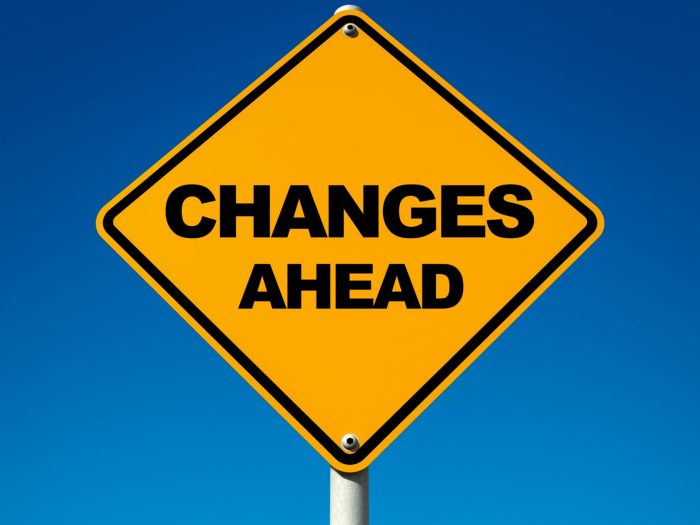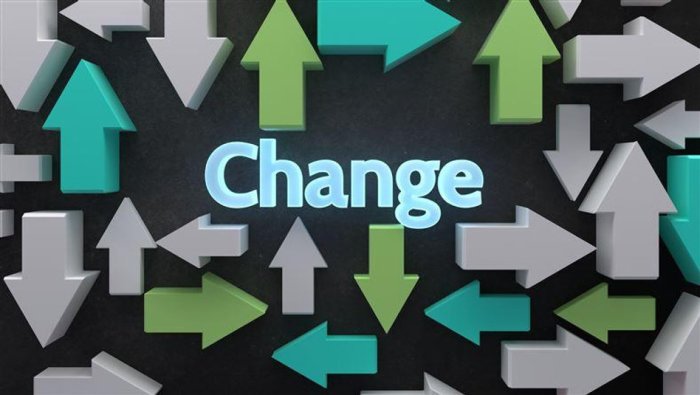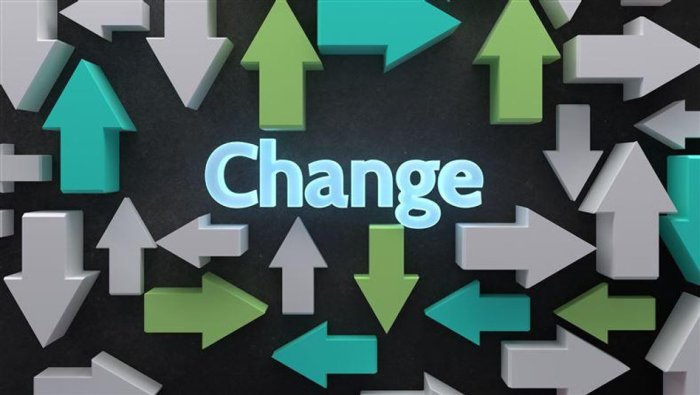Indonesia criminal code changes are creating ripples throughout the nation’s legal landscape. This comprehensive exploration delves into the historical context, specific modifications, potential societal impacts, legal arguments, and future implications of these significant alterations. We’ll examine the motivations behind the changes, analyze potential consequences, and discuss the challenges ahead for Indonesia’s legal system.
The proposed revisions touch upon various aspects of Indonesian law, including cybercrime, corruption, and economic offenses. A detailed breakdown of the changes, alongside their justifications and potential impacts, is presented. This analysis aims to provide a thorough understanding of the reform process and its implications for individuals, businesses, and the justice system.
Background of Indonesian Criminal Code Changes

Indonesia’s criminal justice system has undergone significant evolution, with the current Criminal Code (KUHP) reflecting a complex historical trajectory. The proposed revisions represent a substantial departure from the existing framework, aiming to address shortcomings and adapt to contemporary societal needs. These changes are not simply a modernization effort but a crucial step towards a more just and equitable legal system.
Historical Overview of Indonesian Criminal Codes
The current Indonesian Criminal Code (KUHP) traces its roots back to the Dutch colonial era. The original code, enacted in 1918, was heavily influenced by European legal traditions. Subsequent amendments and adjustments have occurred, but the core structure remained largely unchanged. Prior to the 1918 code, various legal systems were in place, reflecting the diverse influences that shaped Indonesian legal history.
Motivations and Driving Forces Behind the Changes
Several key motivations fueled the drive for revising the Indonesian Criminal Code. The existing code was widely perceived as outdated, lacking clarity in certain areas, and not aligning with modern principles of human rights. The complexity of the law also contributed to delays and inconsistencies in legal proceedings. Further, concerns about the application of the law in specific cases, highlighting the need for a more contemporary approach to justice, added to the pressure for reform.
Timeline of Legislative Processes
The process of revising the Indonesian Criminal Code involved a multi-phased legislative journey. Initial drafts and consultations with various stakeholders, including legal experts, civil society groups, and government officials, were crucial steps in the process. These phases were followed by public hearings and parliamentary debates. This timeline demonstrates a significant commitment to public input and thorough consideration of diverse viewpoints.
Key Figures and Institutions Involved
The Indonesian Ministry of Law and Human Rights played a pivotal role in spearheading the code revision process. Other key institutions included relevant parliamentary committees, legal experts, and academics who provided valuable input during the drafting and review phases. This collaborative effort underscores the importance of diverse perspectives in shaping legal reforms.
Context Within Indonesia’s Political and Social Landscape
The proposed changes to the Indonesian Criminal Code occur within a complex socio-political landscape. Indonesia is a nation undergoing rapid social and economic transformation, with ongoing debates about human rights, justice, and the role of the state. The reform process reflects Indonesia’s commitment to evolving its legal framework to address contemporary challenges.
Key Events in the Reform Process
| Year | Key Event | Description | Impact |
|---|---|---|---|
| 2022 | Initial Draft Released | The initial draft of the revised Criminal Code was made public. | Public debate and discussion began, and concerns were raised. |
| 2023 | Public Hearings and Consultations | Various stakeholders, including legal experts, civil society groups, and government officials, were consulted. | The process involved broader input from society and addressed concerns raised. |
| 2024 | Parliamentary Debate | The revised draft was debated and discussed in parliament. | This stage involved extensive review and amendment based on parliamentary discussions. |
Specific Areas of Criminal Code Changes
The Indonesian Criminal Code (KUHP) revisions represent a significant step towards a more modern and comprehensive legal framework. This update tackles various areas, from traditional crimes to emerging offenses like cybercrime and economic fraud. The changes aim to improve the clarity and consistency of the law, while also addressing issues of fairness and proportionality in sentencing.The revised KUHP introduces a more nuanced approach to defining crimes, reflecting the evolving nature of criminal activity.
The emphasis is on adapting to the digital age and globalized economic landscape. This necessitates a re-evaluation of existing laws and the introduction of new provisions to effectively address contemporary issues.
Cybercrime Modifications
The revised KUHP dedicates a significant portion to cybercrime, recognizing the growing importance of online activity. The definition of cybercrime offenses has been broadened to encompass a wider range of activities, including online fraud, defamation, and the creation and distribution of illegal content. This approach aims to effectively address the unique challenges posed by the digital environment. Examples include provisions for hacking, spreading misinformation online, and unauthorized access to computer systems.
This comprehensive approach ensures that cybercriminals are held accountable for their actions.
Corruption Offenses
The updated KUHP includes stricter penalties for corruption-related offenses. This signifies a strong commitment to combating corruption at all levels of society. The revision clarifies the definition of corruption, including bribery, embezzlement, and abuse of power. The changes introduce stiffer penalties for corrupt practices, which should deter individuals from engaging in such activities. The focus on accountability is central to these changes.
Economic Offenses
The revised KUHP also includes provisions addressing economic offenses. This area covers a range of activities, from money laundering to fraud and unfair competition. The new provisions clarify the definitions and penalties for various economic crimes. This modernization recognizes the complexities of modern economic activity and the need for clear legal frameworks to address these issues. The inclusion of detailed guidelines for penalties ensures consistent application of the law.
Indonesia’s recent criminal code changes are definitely making waves. While navigating these updates, I’ve been looking for ways to unwind, and exploring the fantastic attractions of Toledo, Ohio, has been a real mood booster. From the glass art at the Toledo Museum of Art to the quirky shops in the historic downtown area, there are plenty of great options to explore.
Top things to do in Toledo Ohio are a fantastic distraction from the legal landscape, but I’m still keeping a close eye on how these changes will impact the country in the long run.
Changes in Penalties and Sentencing
The revised KUHP introduces a more structured approach to sentencing. The updated guidelines aim for greater consistency and fairness in sentencing across different crimes. The changes emphasize the principle of proportionality, ensuring that penalties align with the gravity of the offense. This change ensures the punishment matches the crime.
Comparison of Old and New Provisions
| Old Law | New Law | Description of Change | Justification |
|---|---|---|---|
| Vague definition of cybercrime | Specific definitions for various cybercrimes | Increased clarity and specificity in defining cybercrimes, accommodating the digital age. | To better address cybercrime and hold offenders accountable. |
| Limited penalties for corruption | Stricter penalties for corruption offenses | Enhancement of penalties for various corruption acts, reflecting the severity of these offenses. | To deter corruption and promote accountability. |
| Insufficient coverage of economic offenses | More comprehensive provisions for economic crimes | Expansion of the scope of economic offenses, encompassing a broader range of economic activities. | To effectively address the challenges of modern economic crime. |
New Crimes Introduced
The revisions introduce several new crimes related to online activities and economic offenses. These new crimes reflect the emergence of new forms of criminal activity in the digital age. These additions are crucial to addressing evolving threats and ensuring that the legal system remains relevant.
Rationale Behind Changes
The rationale behind specific changes in the KUHP is multifaceted. It aims to enhance the clarity and consistency of the law, address emerging forms of criminal activity, and promote fairness and proportionality in sentencing. The emphasis is on adapting the legal framework to the changing realities of Indonesian society. This adaptation ensures the law’s continued relevance.
Impact of Changes on Society

The Indonesian Criminal Code (KUHP) revisions represent a significant shift in the nation’s legal landscape. These changes aim to modernize the code, aligning it with international standards and addressing perceived shortcomings. However, the potential impact on society is multifaceted and warrants careful consideration. The repercussions extend far beyond the courtroom, affecting everything from crime rates to the prison system.
Potential Effects on Crime Rates and Public Safety
The revised KUHP introduces new provisions and modifies existing ones, potentially altering the way crimes are categorized and punished. This could lead to a shift in crime rates. For instance, if certain acts are now considered less serious offenses, the overall crime rate might see a slight increase in those specific categories. Conversely, enhanced penalties for certain crimes could potentially deter offenders and decrease their frequency.
The impact on public safety will depend on how effectively the revised code is implemented and enforced.
Impact on Law Enforcement Practices
The new code necessitates changes in law enforcement practices. Law enforcement agencies will need to adapt to the new definitions of crimes, procedures for investigations, and arrest protocols. Training programs and updated guidelines will be crucial to ensure officers understand and apply the revised laws correctly. Proper implementation of these changes is essential to avoid misinterpretations or unintended consequences, such as excessive force or biased application of the law.
Consequences for Individuals and Businesses
Individuals and businesses will be directly affected by the updated criminal code. New regulations could lead to stricter liability standards for corporations and individuals involved in commercial activities. Clearer definitions of criminal responsibility will provide more legal certainty but also potential for increased legal challenges. The potential for civil lawsuits arising from criminal accusations may also increase.
Businesses must adjust their operational practices to comply with the new legal framework.
Expected Effects on the Judicial System
The judicial system will experience a substantial workload adjustment as a result of the code revisions. Increased caseloads could strain existing resources and infrastructure. The need for additional judges, prosecutors, and legal support staff may become apparent. Improved legal frameworks could lead to more efficient and transparent judicial proceedings. Long-term, the revised code may lead to a more consistent and predictable application of the law, enhancing public trust in the judicial system.
Anticipated Impact on the Prison System
The updated code may affect the prison population. Changes in sentencing and reclassification of offenses could alter the prison demographics. Rehabilitation programs and prisoner support services might be crucial for successful reintegration. Changes in the prison system may include new facilities and a shift in the focus of penal policies. In the long run, a more rehabilitative approach could lead to lower recidivism rates.
Table: Potential Impacts of Criminal Code Changes
| Affected Area | Potential Impact | Positive Impacts | Negative Impacts |
|---|---|---|---|
| Crime Rates | Possible fluctuations depending on the severity of new penalties for specific crimes. | Potential decrease in certain crimes due to stricter penalties. | Potential increase in certain crimes if new categories are deemed less serious. |
| Law Enforcement | Need for training and adaptation to new procedures. | Improved clarity and consistency in law enforcement practices. | Potential for misinterpretations or inconsistencies in application. |
| Individuals/Businesses | Increased legal certainty but also potential for increased legal challenges. | Clearer definition of criminal responsibility. | Potential for stricter liability standards for corporations and individuals. |
| Judicial System | Increased caseloads and strain on resources. | Potential for more efficient and transparent proceedings. | Increased workload, potentially affecting efficiency. |
| Prison System | Potential shifts in demographics and needs. | Increased focus on rehabilitation programs. | Strain on existing facilities and resources. |
Analysis of Legal Arguments for Changes
The Indonesian Criminal Code (KUHP) overhaul presents a complex tapestry of legal arguments, both supporting and opposing the proposed amendments. These arguments delve into fundamental aspects of justice, societal needs, and the very fabric of the Indonesian legal system. Understanding these arguments is crucial to evaluating the potential impact of the changes on the country’s legal landscape and the lives of its citizens.
Arguments in Favor of the Changes
The proposed changes to the Indonesian Criminal Code aim to address perceived shortcomings in the existing legislation. These include issues such as outdated language, inconsistencies in sentencing, and a lack of clarity in certain areas. Advocates argue that the new code will bring Indonesia into alignment with modern legal standards and international best practices. A key aspect of these arguments revolves around the promotion of a more just and equitable criminal justice system.
- Increased Clarity and Precision: The new code strives for greater clarity in defining criminal offenses, reducing ambiguity and the potential for misinterpretation. This is vital for ensuring fair and consistent application of the law across different jurisdictions and for diverse cases.
- Modernization and Adaptability: The current code, while historically significant, is often considered outdated in its approach to modern crimes. The proposed revisions are meant to adapt to the evolving nature of crime and technology, addressing issues like cybercrime and economic offenses that were absent or inadequately addressed in the previous code.
- Enhanced Human Rights Protection: Proponents highlight the code’s incorporation of human rights considerations. This means a more balanced approach to punishment and rehabilitation, acknowledging the importance of protecting individual rights within the context of criminal justice.
Arguments Against the Changes
Critics of the proposed changes express concerns about the potential negative consequences of the reforms. These concerns encompass aspects like the erosion of certain established legal principles, unintended consequences, and concerns about the practical application of the new code.
- Erosion of Established Principles: Some argue that the proposed amendments dilute or eliminate fundamental principles of the existing legal framework. This raises concerns about the potential for the erosion of established legal precedent and a loss of consistency in judicial interpretations.
- Unintended Consequences: Opponents raise the possibility of unforeseen negative consequences resulting from the changes. These might include difficulties in applying the new laws, potential for abuse, or unintended discrepancies in legal interpretations.
- Concerns about Implementation: The practicality of implementing the new code is also questioned. Critics worry about the potential challenges in training judges and law enforcement officials, as well as the necessary resources required for proper implementation and enforcement.
Different Legal Interpretations of the Proposed Amendments
Legal interpretations of the proposed amendments vary considerably. Different legal scholars and experts have offered diverse perspectives on the meaning and implications of specific provisions. This divergence in interpretation underscores the complexity of the proposed changes.
So, Indonesia’s criminal code changes are definitely something to keep an eye on. But, thinking about a beach vacation soon? To prepare for that, you’ll want to make sure you’ve got everything on your beach vacation packing list. Sunscreen, towels, and a good book are essential, but don’t forget the little things. Hopefully, these changes will make Indonesia even safer for tourists, making your next beach trip even more enjoyable!
- Diverse Perspectives: There are varying opinions on the scope and intent of certain amendments. These differences arise from differing legal philosophies and priorities.
- Specific Clause Interpretations: Certain clauses in the proposed code have been interpreted differently by legal professionals. This leads to debate regarding the exact meaning and application of specific provisions.
Examples of Case Studies
- Illustrative Cases: While specific case studies directly demonstrating the application of the
-new* Indonesian Criminal Code are not yet available, hypothetical scenarios can illustrate potential differences in the application of the proposed laws. For example, a case involving cyberstalking would be assessed under the revised code, potentially resulting in a different outcome than under the current law.
Comparison of Existing Laws Versus Proposed Ones, Indonesia criminal code changes
| Argument Type | Supporting Evidence | Counterarguments |
|---|---|---|
| Clarity and Precision | The proposed code aims for greater clarity in defining offenses. | Critics suggest that the new definitions might be just as ambiguous as the existing ones, or even introduce new ambiguities. |
| Adaptability to Modern Crimes | The new code addresses modern crimes like cybercrime. | Concerns remain about whether the proposed amendments adequately anticipate future criminal developments. |
| Human Rights Protection | Proponents highlight the code’s inclusion of human rights principles. | Opponents argue that the changes may undermine existing human rights protections. |
Future Implications and Challenges
The Indonesian Criminal Code’s overhaul presents a complex tapestry of potential future implications. While intended to modernize and streamline the legal framework, the changes also introduce new challenges that require careful consideration and proactive measures. Navigating these implications will be crucial for ensuring a just and equitable application of the law in the years to come.
Potential Future Challenges
The revised Criminal Code’s implementation will likely encounter unforeseen obstacles. Existing legal precedents and interpretations might clash with the new provisions, potentially leading to inconsistencies in judicial application. Difficulties in translating complex legal concepts into practical application for law enforcement and the public could also arise. Additionally, the societal impact of the changes, including public understanding and acceptance, remains uncertain.
Indonesia’s recent criminal code changes are quite a hot topic right now. While the specifics are still being debated, it’s clear there’s a lot of discussion about the impact these changes will have. Planning a trip to explore the best time to visit Atlanta? This guide will help you pick the perfect time to experience the vibrant city.
Ultimately, these legal shifts will likely affect many aspects of Indonesian society, and the details are something to watch closely.
The potential for increased legal disputes and delays in case processing needs careful monitoring.
Need for Future Adjustments and Clarifications
Amendments to the Criminal Code might become necessary in the future to address unforeseen circumstances and issues. This may involve clarifying ambiguous provisions or adjusting penalties based on evolving societal needs and concerns. Specific areas of the code, like those dealing with technology-related crimes or cyber offenses, might require immediate attention due to the rapid advancements in these fields.
The need for further adjustments is not a sign of a flawed system, but rather a recognition of the dynamic nature of law.
Further Education and Awareness
Public awareness campaigns are essential to ensure that both the general public and legal professionals understand the new Criminal Code. Effective communication is vital to foster compliance and understanding. This can involve workshops, seminars, and accessible online resources outlining the revised provisions. Failure to adequately educate the public on the new code could result in misinterpretations and unintended consequences.
For example, a lack of awareness about new definitions for specific offenses might lead to confusion in both legal and social spheres.
Areas for Improvement in the Legal Framework
The new code, while a step towards modernization, might still require improvement. Areas like the clarity and precision of language in specific articles could benefit from further refinement. Streamlining the legal procedures for case resolution could significantly reduce delays. The effectiveness of sanctions, and their potential impact on deterring future criminal activity, needs rigorous evaluation. A review of the code’s application and its alignment with international human rights standards should be a priority.
Strategies for Mitigating Negative Impacts
To minimize the potential negative consequences of the code changes, a proactive approach is crucial. Establishing clear guidelines and protocols for implementing the new code will be essential for law enforcement. Ongoing monitoring of the code’s application and its effect on different social groups is crucial. Open channels for feedback and suggestions from the public and legal experts are critical.
For example, establishing independent oversight mechanisms for the implementation of the code could prevent potential abuses.
The future implications of these changes necessitate a cautious and adaptive approach. Thorough monitoring and ongoing refinement are essential to ensure the Criminal Code’s effectiveness and to minimize potential negative impacts on Indonesian society.
Illustrative Examples of Potential Cases: Indonesia Criminal Code Changes
The Indonesian Criminal Code revisions present a complex landscape for legal interpretation. Understanding how these changes will affect real-world scenarios is crucial for predicting outcomes and assessing the impact on Indonesian society. These hypothetical cases explore potential applications of the new code, highlighting its implications for various aspects of the judicial process.The examples below aim to illustrate the application of the new criminal code in diverse situations, considering potential interpretations and outcomes.
They emphasize the nuances of the revised provisions and the challenges of implementing them fairly and consistently. These scenarios are not intended as legal advice, but rather as tools for analyzing the impact of the new legislation.
Cyberbullying Cases
The revised code likely incorporates broader definitions of cyberbullying, addressing the evolving nature of online harassment. This will lead to a more comprehensive legal framework to tackle online abuse and protect individuals.
- Scenario: A social media influencer publicly shames a rival competitor using fabricated evidence, causing significant reputational damage and emotional distress. The victim seeks legal recourse.
- Relevant Law: Revised provisions on defamation, cybercrime, and possibly a new provision targeting online harassment.
- Potential Outcome: A conviction for defamation and/or cybercrime is possible, potentially including compensation for damages. The outcome will depend on the strength of evidence, the nature of the online attack, and the court’s interpretation of the revised laws.
- Legal Arguments: The defense might argue that the comments were merely opinions or that the influencer had a right to free speech. The prosecution would argue that the fabricated evidence and the public nature of the shaming constituted malicious intent and significant harm.
Environmental Crime Cases
The revised code potentially expands environmental crime provisions, introducing stronger penalties for illegal logging, pollution, and other environmental offenses. This reflects the growing emphasis on environmental protection in Indonesia.
| Case Scenario | Relevant Law | Potential Outcome | Legal Arguments |
|---|---|---|---|
| A logging company illegally deforests a protected rainforest area, causing significant damage to biodiversity. | Revised provisions on environmental crime, including those on deforestation and illegal logging. | Possible conviction and substantial fines, potentially leading to closure of the company. Reforestation efforts might be mandated as part of the punishment. | The defense might argue that the logging occurred in an area not legally recognized as protected, or that the damage was less severe than claimed. The prosecution will highlight the clear violation of environmental regulations and the extensive damage to the ecosystem. |
| A factory discharges industrial waste into a river, contaminating the water supply and harming local communities. | Revised provisions on environmental crime and pollution. | Potential conviction, heavy fines, and possibly closure or stringent environmental compliance measures. | The defense might argue that the discharge was unintentional or that the factory complied with existing, albeit outdated, regulations. The prosecution will present evidence of the contamination and the harm to public health. |
Economic Crime Cases
The revised code might introduce stricter penalties for corruption, money laundering, and other economic crimes. This change reflects a global trend towards stronger anti-corruption measures.
- Scenario: A government official accepts bribes in exchange for awarding a lucrative contract to a favored company.
- Relevant Law: Revised provisions on corruption, bribery, and money laundering.
- Potential Outcome: Conviction and significant imprisonment, along with the forfeiture of ill-gotten gains.
- Legal Arguments: The defense might argue that the payments were legitimate business transactions or that the official’s actions did not violate the specific provisions of the revised code.
The prosecution will argue that the bribes constituted a clear violation of anti-corruption laws and caused financial harm to the government.
Wrap-Up
In conclusion, Indonesia’s criminal code changes represent a significant undertaking with far-reaching consequences. The proposed alterations present both opportunities and challenges for the nation’s legal system. While the changes aim to modernize and improve the code, potential drawbacks and future adjustments need careful consideration. The discussion highlights the need for a balanced approach to reform, considering both the intended benefits and the potential negative impacts.




